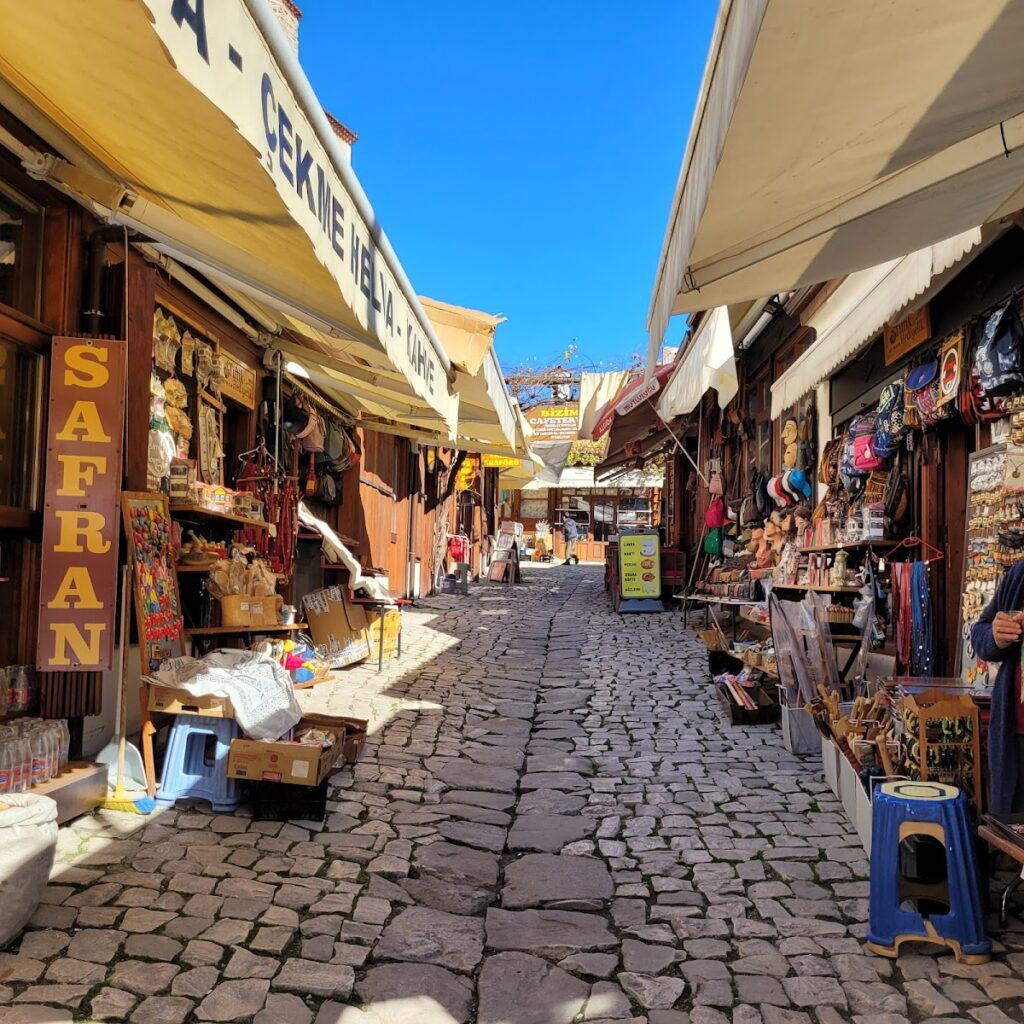Safranbolu: A Historic Town in Turkey with Rich Ottoman Heritage
Visitor Information
Google Rating: 4.7
Popularity: Medium
Google Maps: View on Google Maps
Country: Turkey
Civilization: Ottoman
Remains: City
History
Safranbolu is a historic town situated in the municipality of Musalla, in modern-day Turkey. Its origins date back to at least 3000 BCE, as shown by ancient burial mounds known as tumuli found in the area. The town lies within the boundaries of the ancient region called Paphlagonia and has been home to a succession of civilizations including the Hittites, Phrygians, Lydians, Persians, various Hellenistic kingdoms, Romans (later Byzantines), Seljuks, and Ottomans.
In the medieval period, Safranbolu came under the control of the Seljuk Turks in 1196, when Muhiddin Mesut Shah, son of Sultan Kilij Arslan II, led its conquest. Following this, the town was governed by the Çobanoğulları Beylik from 1213 to 1280, and later by the Candaroğulları Beylik between 1326 and 1354. Full Ottoman rule was established by 1416, integrating Safranbolu into the expanding empire.
During the Ottoman era, particularly in the 17th century, Safranbolu prospered as an important stop along the caravan route connecting Istanbul to Sinop on the Black Sea coast. This position fostered its development as a cultural and economic hub. The town became well known for cultivating and trading saffron, a valuable spice, which influenced its name—combining the word for saffron with the Greek term “polis,” meaning city.
Before the population exchange between Greece and Turkey in 1923, Safranbolu had a notable Greek Orthodox community. After this event, the Greek inhabitants were relocated, marking a significant demographic change. In recognition of its well-preserved Ottoman architecture and urban layout, Safranbolu was designated a UNESCO World Heritage site in 1994. The town has retained much of its traditional character, partly due to limited industrial development and urban expansion, even after the nearby establishment of the Karabük Iron and Steel Factory in 1939.
Remains
Safranbolu’s historic center is distinguished by its extensive collection of traditional Ottoman-era buildings, with over 1,000 registered historical artifacts and approximately 1,008 protected structures. The town’s layout is divided into three main areas: the Old Town (Çarşı Bölgesi), the modern middle center (Kıranköy), and the upper town (Bağlar), which historically served as a summer retreat. The Old Town is situated on the slopes of a deep ravine, while the newer parts of the town lie on a plateau nearby.
The traditional houses in Safranbolu typically rise three stories high, featuring a stone ground floor topped by two upper floors made of plastered timber framing. This style reflects classical Ottoman residential architecture, with evident influences from Greek craftsmanship. Many of these houses include rectangular water basins, known locally as havuz, in their courtyards, a distinctive element of the town’s architectural customs.
Among the notable Ottoman structures in the Old Town is the Cinci Han caravanserai, dating from the 17th century. This building served as a roadside inn for travelers and merchants. It has a fortified appearance, characterized by narrow windows and arrow slits, and encloses a large courtyard surrounded by two levels of arcades. At the center of the courtyard stands a fountain, adding to the caravanserai’s functional and aesthetic qualities. Adjacent to it is the Cinci Hamam, a bathhouse from the same century, which provided public bathing facilities in line with Ottoman social customs.
Religious architecture includes several mosques of historical importance. The Köprülü Mehmet Pasha Mosque, constructed between 1656 and 1661, features a courtyard with a Roman sundial, linking it to earlier historical periods. The Izzet Mehmet Pasha Mosque, built in the late 18th century, displays interior decorations influenced by Central European Rococo style. This mosque complex also contains a library and the founder’s sarcophagus within its courtyard. Other mosques include the Dağdelen Mosque from the 18th century and the Kalpak or Lütfiye Mosque of the 19th century, the latter uniquely built on an arch spanning the Safranbolu River.
The Old Town also preserves five tombs and eight historic fountains, which contribute to the town’s rich cultural landscape. Several historic bridges and rock-cut tombs are found in the vicinity, further illustrating the area’s long history of settlement and architectural activity.
A 19th-century neoclassical palace, once serving as the town hall, now functions as the city museum. This building offers panoramic views over the historic center and represents a later phase of architectural development in Safranbolu.
Beyond the urban area, archaeological features include ancient settlement mounds and tumuli dating back to the early Bronze Age, as well as rock-cut tombs. Approximately seven kilometers north of the town lies the Incekaya Aqueduct, a water bridge from the Byzantine period that once supplied water to the region. Nearby natural features include the Bulak (Mencilis) Cave, which extends about 2.7 kilometers and has two entrances. A 350-meter section of this cave is illuminated, highlighting its significance as a natural landmark close to Safranbolu.
The preservation of Safranbolu’s historic fabric remains strong due to legal protections and ongoing restoration efforts. Its status as a UNESCO World Heritage site and designation as an urban conservation area since 1975 have played key roles in maintaining the town’s architectural and cultural heritage.

